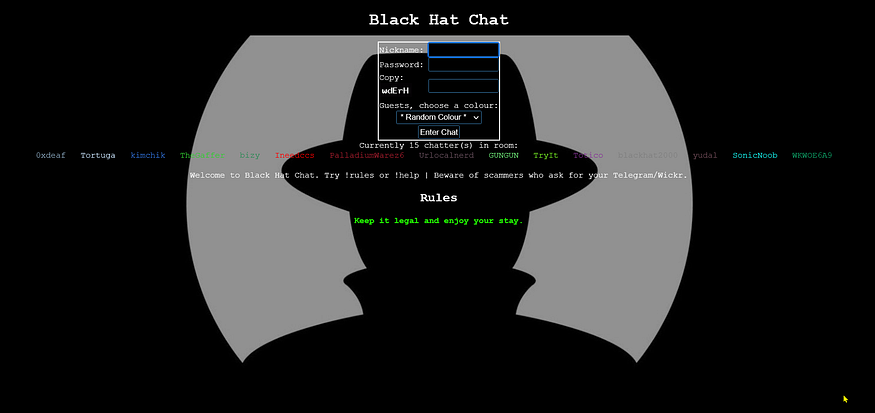How many of you often see messages and alerts saying “Your credentials are compromised and found on darkweb”. In this article, let’s understand how your credentials end up on dark web and how you can search for your compromised credentials on the dark web.
In recent years, the number of high-profile data breaches has increased dramatically, resulting in billions of compromised user credentials appearing on the dark web. These compromised credentials can be purchased by cybercriminals and used to gain unauthorized access to user accounts, steal sensitive information, and engage in other nefarious activities. As a result, it’s critical for individuals and organizations to proactively search for compromised credentials on the dark web. In this article, we’ll discuss how to find compromised credentials on the dark web.
Darkweb 101:
The dark web is a part of the internet that is not indexed by search engines and can only be accessed using specialized anonymity tools such as the Tor network. It is often associated with illegal activities such as the sale of drugs, weapons, and stolen personal data, as well as the distribution of illegal pornography. However, the dark web also serves as a platform for political activists and journalists to communicate and share information securely. It is important to note that accessing the dark web is not illegal in itself, but engaging in illegal activities on the dark web is against the law.
How Credentials End Up on Dark Web?
Before we try to see how to find compromised credentials on darkweb, first let us understand how the credentials endup on darkweb in the first place. There are several ways that compromised credentials can end up on the dark web.
One way is through data breaches. When a company or organization experiences a data breach, the attackers may steal large amounts of sensitive information, including user names, passwords, and other personal data. This information is often then sold on the dark web to other criminals who can use it for a variety of purposes, such as identity theft or fraud.
Another way that compromised credentials can end up on the dark web is through phishing scams. In a phishing attack, the attacker sends an email or message to the victim that appears to be from a legitimate source, such as a bank or a government agency. The victim is then asked to enter their login credentials or other personal information, which the attacker then uses to gain access to the victim’s accounts.
Compromised credentials can also end up on the dark web through the use of keyloggers or other malware. Keyloggers are programs that record the keys that a person types on their keyboard, including passwords and other sensitive information. Malware is software that is specifically designed to infiltrate or damage computer systems, and it can often be used to steal login credentials and other sensitive information.
Finally, compromised credentials can also be obtained through social engineering techniques, such as pretexting or baiting. In these attacks, the attacker tricks the victim into revealing their login credentials or other sensitive information by pretending to be someone else or offering something of value in exchange for the information.
Overall, there are many ways that compromised credentials can end up on the dark web, and it is important to be vigilant in protecting your own personal information to reduce the risk of your credentials being compromised.
How to Find Compromised Credentials on Dark Web?
Finding compromised credentials on the dark web can be a daunting task, as it is a vast and largely unregulated space that is home to a wide range of illegal activities. However, there are a few steps you can take to increase your chances of finding compromised credentials.
One approach is to use a search engine specifically designed for the dark web. There are several search engines that are specifically designed for use on the dark web, such as Ahmia, TORCH, and Not Evil. These search engines can help you locate specific websites or pages on the dark web that may contain compromised credentials.


Another approach is to use a dark web monitoring service. These services are designed to scour the dark web for compromised credentials and other sensitive information, and can alert you if your own credentials or personal information has been compromised. Some popular dark web monitoring services include Have I Been Pwned, Mozilla, DarkOwl, and Webhose.

Another way to find compromised credentials on the dark web is to join online communities or forums where such information is shared. These communities are often hidden on the dark web and may require you to use a special software, such as TOR, to access them. Be aware that accessing these communities may be illegal, and you should be cautious about the information you share or access.



It is also important to exercise caution when searching for compromised credentials on the dark web. Many sites on the dark web are scams or contain malicious content, and accessing them can put your own credentials at risk. Always use a secure VPN connection when accessing the dark web, and be sure to use strong, unique passwords for all of your accounts.
Conclusion
Ultimately, finding compromised credentials on the dark web requires a combination of technical expertise, vigilance, and caution. By using the tools and approaches outlined above, you can increase your chances of finding compromised credentials and take steps to protect yourself from potential identity theft or other online crimes.
Follow the author: LinkedIN, Twitter,
